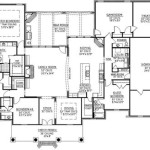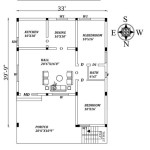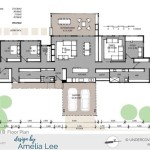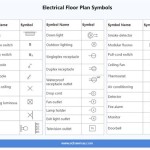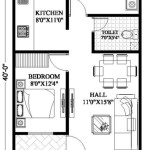Understanding Basic Electrical Floor Plan: A Comprehensive Guide
When it comes to constructing or renovating a space, planning the electrical layout is crucial for ensuring safety, functionality, and efficiency. An electrical floor plan serves as a blueprint for the electrical system, providing a detailed representation of the locations of electrical outlets, switches, lights, and other electrical components. This article aims to comprehensively guide you through the basics of electrical floor plans, empowering you with the knowledge to create or understand one. ### 1. Components of an Electrical Floor Plan: An electrical floor plan typically includes the following essential components: -Electrical Outlets:
These are the points where you can connect appliances, electronics, and other devices to the electrical grid. Outlets are typically spaced evenly throughout a room to ensure accessibility. -Light Fixtures:
The plan indicates the locations and types of light fixtures, such as ceiling lights, chandeliers, or wall-mounted sconces, that will be installed. -Switches:
These are the controls that turn lights and outlets on and off. Switches are typically positioned near doorways or in convenient locations for easy access. -Electrical Panels:
The electrical panel is the central point where all the circuits in a building converge. It contains circuit breakers or fuses that protect the electrical system from overloads and short circuits. -Conduit and Wiring:
The plan shows the routes and types of conduit (protective piping) and wiring that will be used to connect the electrical components. ### 2. Creating an Electrical Floor Plan: To create an electrical floor plan, follow these steps: 1.Start with a Scaled Floor Plan:
Obtain a scaled floor plan of the space, which accurately represents the dimensions and layout of the rooms. 2.Identify Electrical Needs:
Determine the electrical requirements for each room, considering the intended use, furniture placement, and the number of appliances and electronics that will be used. 3.Place Electrical Outlets:
Begin by positioning electrical outlets along the walls, ensuring they are evenly distributed and accessible. Consider the placement of furniture and appliances to optimize outlet locations. 4.Plan for Light Fixtures:
Decide on the types and locations of light fixtures based on the desired ambiance and functionality of each room. Consider using a combination of overhead lighting, task lighting, and accent lighting. 5.Position Switches:
Place switches near doorways and in convenient locations for easy control of lights and outlets. Ensure that switches are accessible without obstructing furniture or decor. 6.Include Electrical Panel and Conduit:
Indicate the location of the electrical panel and the routes for conduit and wiring. Make sure the conduit is properly sized to accommodate the required number of wires. 7.Label and Annotate:
Clearly label each electrical component and include annotations to explain the function and purpose of each circuit. This will help electricians during installation and maintenance. ### 3. Importance of Electrical Floor Plans: 1.Safety:
A well-planned electrical layout minimizes the risk of electrical hazards, such as overloads, short circuits, and fires. It ensures proper distribution of electrical power and prevents overloading of circuits. 2.Functionality:
An effective electrical floor plan ensures that there are enough electrical outlets and light fixtures to meet the needs of occupants. It enhances convenience and allows for flexibility in furniture placement and appliance usage. 3.Efficiency:
A properly designed electrical system can optimize energy usage by strategically placing outlets and light fixtures to reduce the need for extension cords and unnecessary wiring. 4.Compliance with Codes:
Electrical floor plans help ensure compliance with local building codes and regulations, which are essential for obtaining permits and passing inspections. ### 4. Benefits of Hiring a Qualified Electrician: While it is possible to create an electrical floor plan самостоятельно, it is highly recommended to hire a qualified electrician for the following reasons: 1.Expertise and Knowledge:
Electricians have the necessary training, experience, and knowledge to design an electrical layout that meets safety standards and complies with codes. 2.Safety Precautions:
They can assess potential hazards and implement appropriate safety measures to minimize risks during installation and operation. 3.Professional Installation:
Qualified electricians ensure that electrical components are properly installed, connected, and tested to function optimally and safely. 4.Troubleshooting and Maintenance:
Electricians can identify and resolve electrical issues, perform regular maintenance, and provide ongoing support to keep the electrical system in good condition. By understanding the basics of electrical floor plans and the importance of hiring a qualified electrician, you can ensure that your electrical system is safe, functional, efficient, and compliant with regulations. Consult with an electrician to create a comprehensive electrical floor plan tailored to your specific needs and requirements.Create An Electrical Plan Roomsketcher Help Center

Electrical Plan Example House App Layout

How To Draw An Electrical Plan With Roomsketcher

Electrical Plan 101 Know Basics Of Edrawmax

House Electrical Plan Diagram Symbols

Do A Professional Electrical Floor Plan Of House

Easy To Use Floor Plan Drawing

Create An Electrical Floor Plan For You On Autocad

House Electrical Plan Engineering World Layout Floor Drawing

Floor Plan App Electrician Easy Electrical Floorplan Now Available

